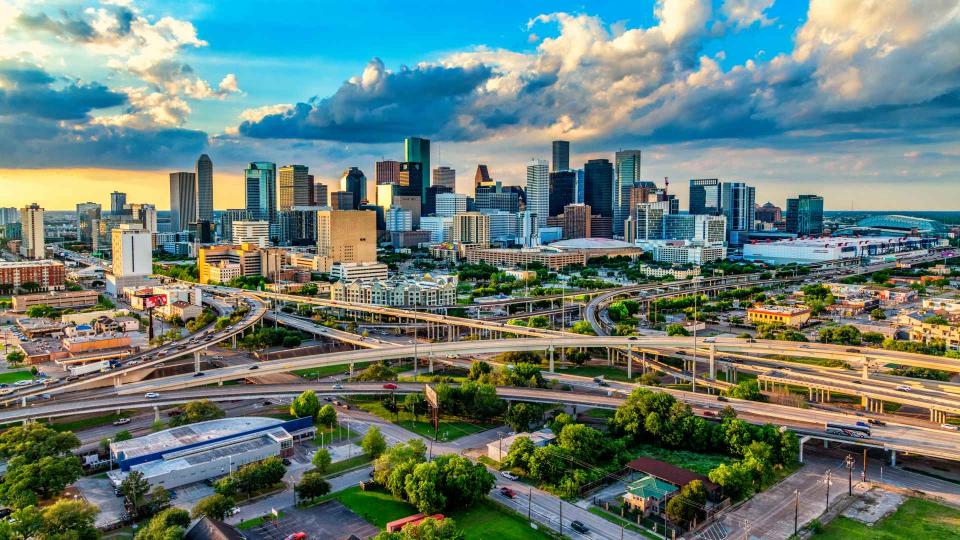Don’t Buy a House in These 4 US Cities With High Utility Bills Year-Round

With interest rates and home prices still stubbornly high, the last thing buyers want is to get into financial trouble because unexpectedly costly utility bills sneak up on their already strained housing budgets.
Explore More: Don’t Buy a House in These 3 Cities Facing a ‘Climate Change Real Estate Bubble’
Read Next: Become a Real Estate Investor for Just $1K Using This Bezos-Backed Startup
In much of the country, the heat of summer and cold of winter lead to seasonal strain, but in some cities, regulatory structure, climate and a confluence of other factors can keep utility prices high all year long. Here are four cities buyers should avoid if they can’t afford to overspend on utilities 365 days a year.
Wealthy people know the best money secrets. Learn how to copy them.
San Francisco
Just in case San Francisco’s infamously prohibitive housing prices weren’t enough to keep you from trying to settle down there, wait until you see what it takes to keep the lights on and the water running.
“San Francisco, while known for its mild climate, has notably high utility rates due to the costs associated with water and electricity in the area,” said Luke Kinser, a contractor, community developer and real estate expert who co-founded Virginia Builders, a small business focused on custom construction solutions. “Monthly utility bills often hover around $300 to $400.”
The energy comparison and marketplace platform EnergySage backs that up, stating that the average San Francisco household spends $300 per month or $3,600 a year on electricity alone — 72% more than the national average electric bill of $2,088.
“The high cost of utilities, combined with already exorbitant housing costs, makes this city particularly challenging for cost-conscious buyers,” Kinser said.
That could be an understatement. If you buy a home there today, EnergySage says you should expect to spend $195,000 on electricity bills in the next 25 years.
Find Out: 5 Unnecessary Bills You Should Stop Paying in 2024
New Orleans
High costs in San Francisco probably won’t come as a surprise, but did you know that paying the bills can be just as hard or harder in the Big Easy?
“New Orleans also sees steep utility costs associated with weather and climate,” Kinser said. “The high humidity and temperatures nearly year-round mean constant use of air conditioning. Average monthly utility expenses can range from around $350 to $400.”
In August 2023, when the Crescent City was mired in a smothering heat wave, Louisiana Weekly reported on new data showing that New Orleans residents paid an average of $467 per month compared to the national average of $351.
“Additionally, the region’s frequent storms often lead to increased insurance and maintenance costs, making an already expensive situation worse,” Kinser said.
Houston
Andrew Fortune, real estate broker and founder of Great Colorado Homes, lived in Houston for 20 years before moving to Colorado Springs, where he says the region’s lone public utility provider keeps bills low.
Houston, on the other hand, has a free market system that is supposed to deliver lower prices through increased competition.
Houston Newcomer Guides wrote, “CenterPoint Energy is the regulated utility in the Houston area and owns and maintains the electricity delivery system. It is also the primary provider of natural gas in the Houston area. However, Houstonians have the power to buy their electricity from several companies. Retail Electric Providers (REPs) compete to sell electricity to homes and businesses and may offer lower prices, renewable energy options, added customer services and other offers.”
That was not Fortune’s experience.
“There are many choices for power companies in Houston, but they are all brokers,” he said. “Residents have to pay a fee for the company to be the middleman between the power source and your home.”
As the weather becomes more volatile in Texas, so, too, do energy prices. According to the Bureau of Labor Statistics, electricity prices in the Houston area are up roughly 16% from one year ago. The Dallas Fed reports that Texans are paying twice as much for electricity than they did pre-pandemic.
Honolulu
Honolulu is one of the most expensive cities in America — and the high cost of utilities plays a big role in that dynamic.
“Hawaii, in general, probably tops the list for the most expensive electricity out of all 50 states,” said Marshall Golub, chief operating officer of HedgeStone Business Advisors, a full-service firm of Syosset, New York-based agents and brokers specializing in real estate, businesses, mergers and acquisitions. “Hawaii’s electricity costs are around 73% above the national average because they import their fuel. The retail price of electricity in Honolulu is approximately $0.44 per kilowatt-hour (KWh). In comparison, in Edmond, Oklahoma, you can expect to pay only $0.13 per KWh, which is around 26% less than the national average. To illustrate, residents of Edmond, Oklahoma, will pay around $113.75 a month for an 875-KWh consumption, whereas residents of Honolulu will pay around $385 for the same consumption. That is a discrepancy of about $270.”
A May study from Move.org backs that up, stating that thanks to its reliance on imported petroleum for 60% of its electricity generation, Hawaii has the highest electricity costs of all 50 states, about triple the average U.S. rate. When you include water, sewer, streaming media, broadband, trash and natural gas, the average monthly utility bill in the Aloha State is $897, compared to the national average of $562-$637.
More From GOBankingRates
This article originally appeared on GOBankingRates.com: Don’t Buy a House in These 4 US Cities With High Utility Bills Year-Round

 Yahoo Finance
Yahoo Finance 